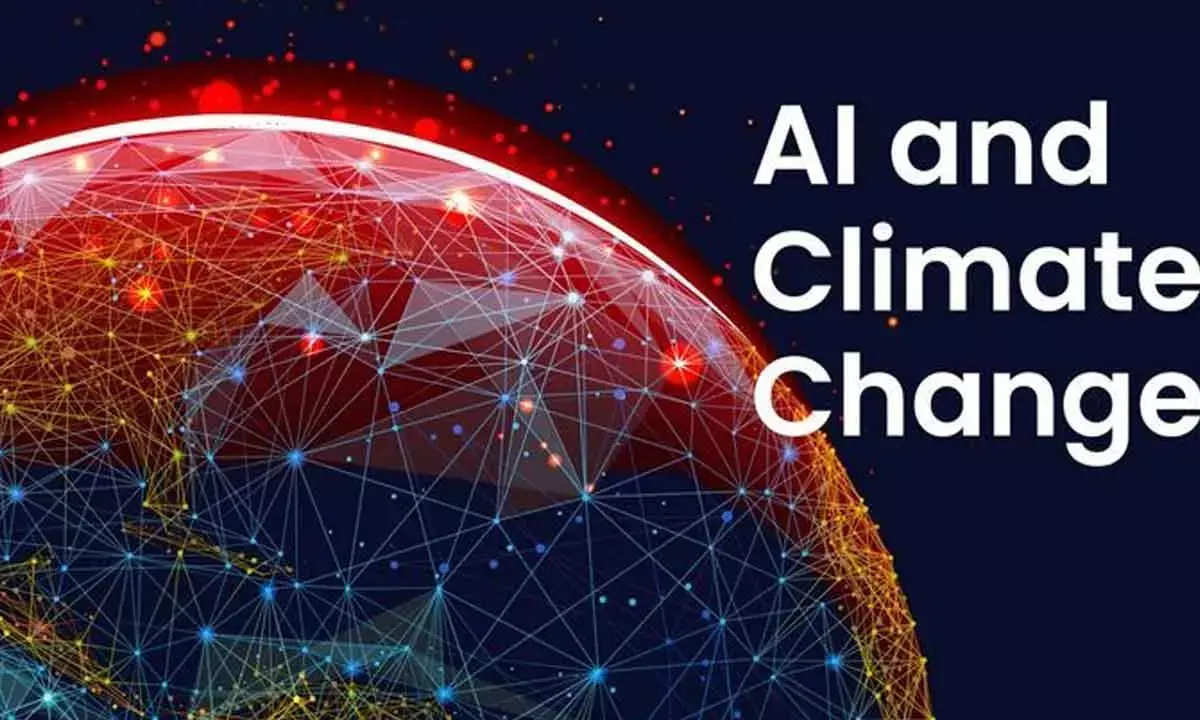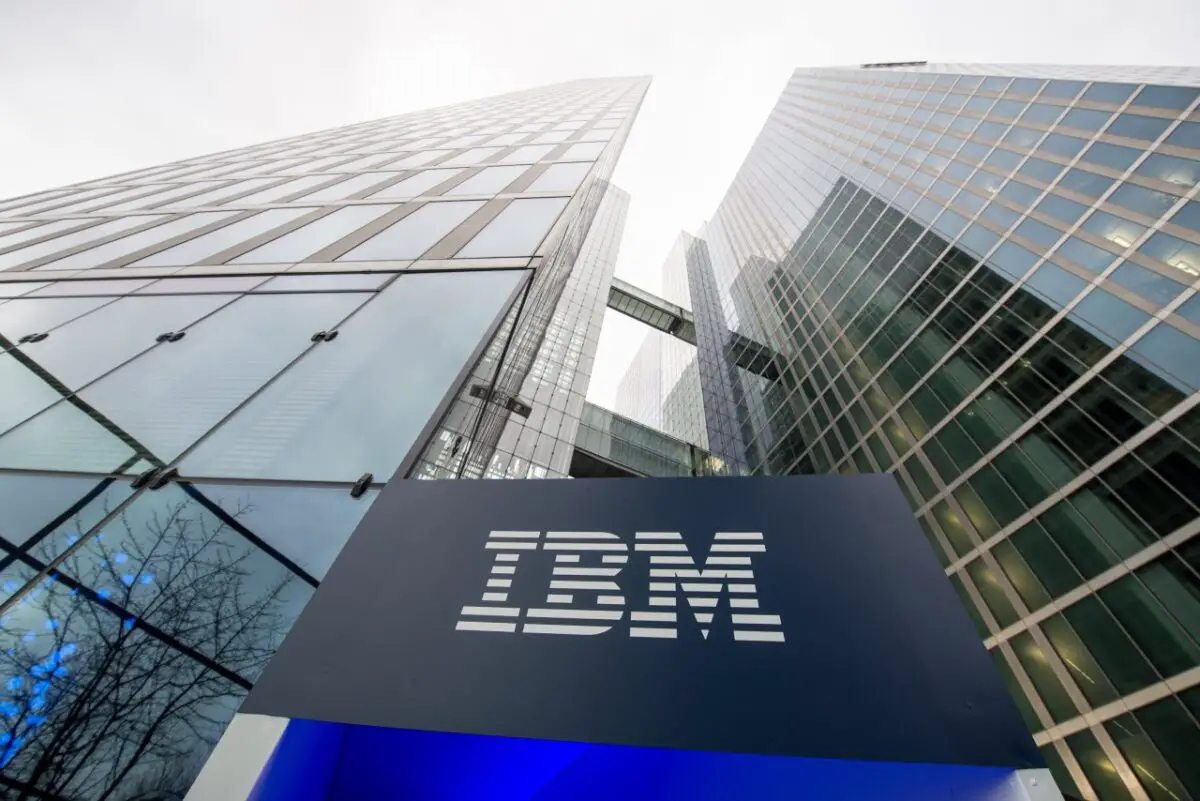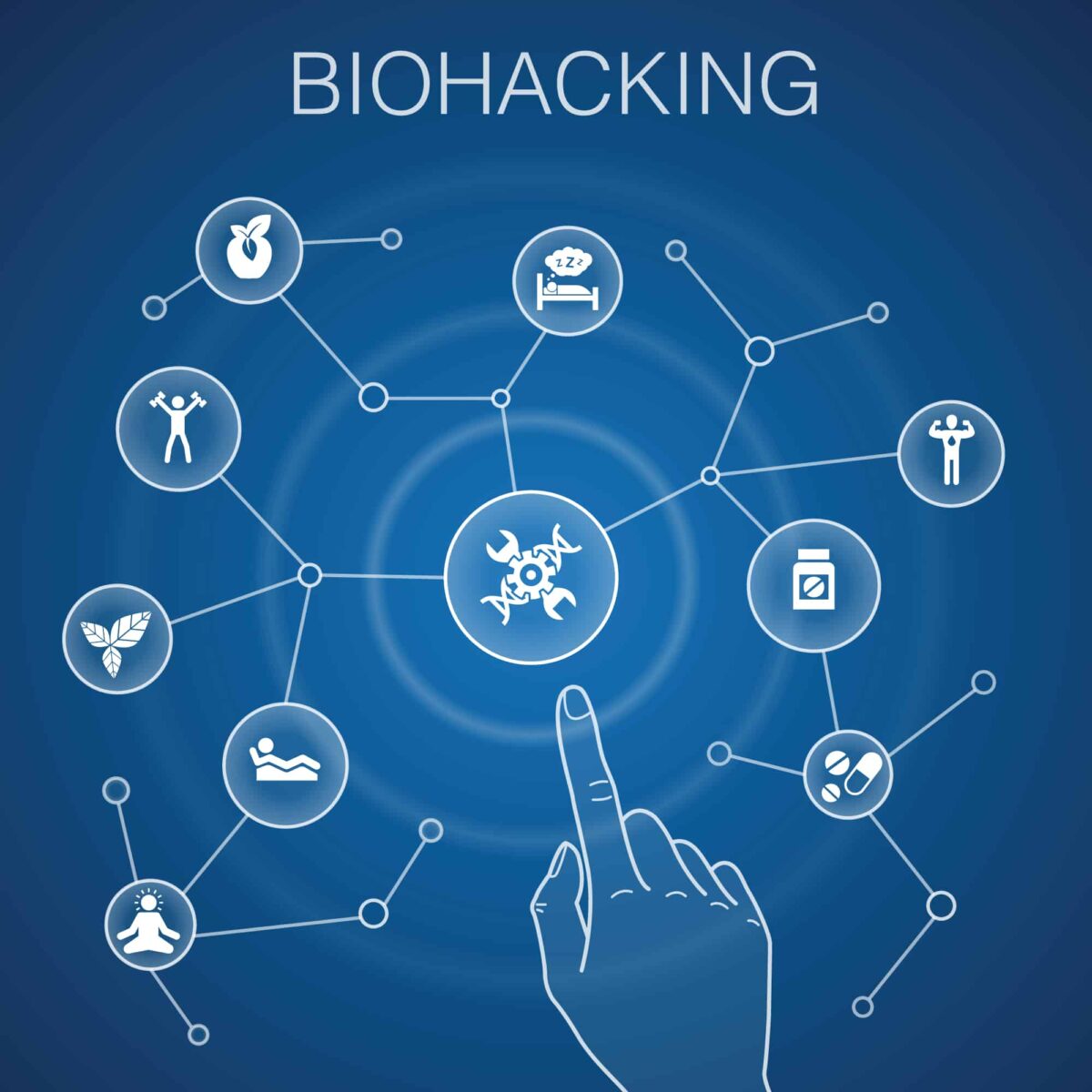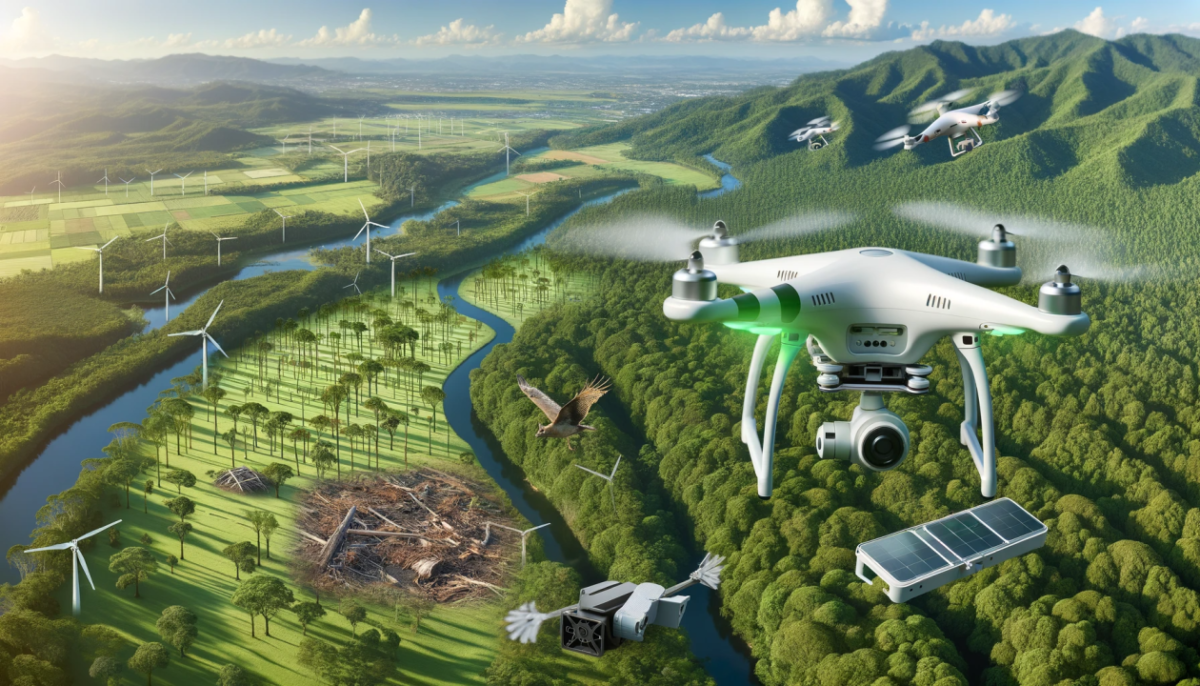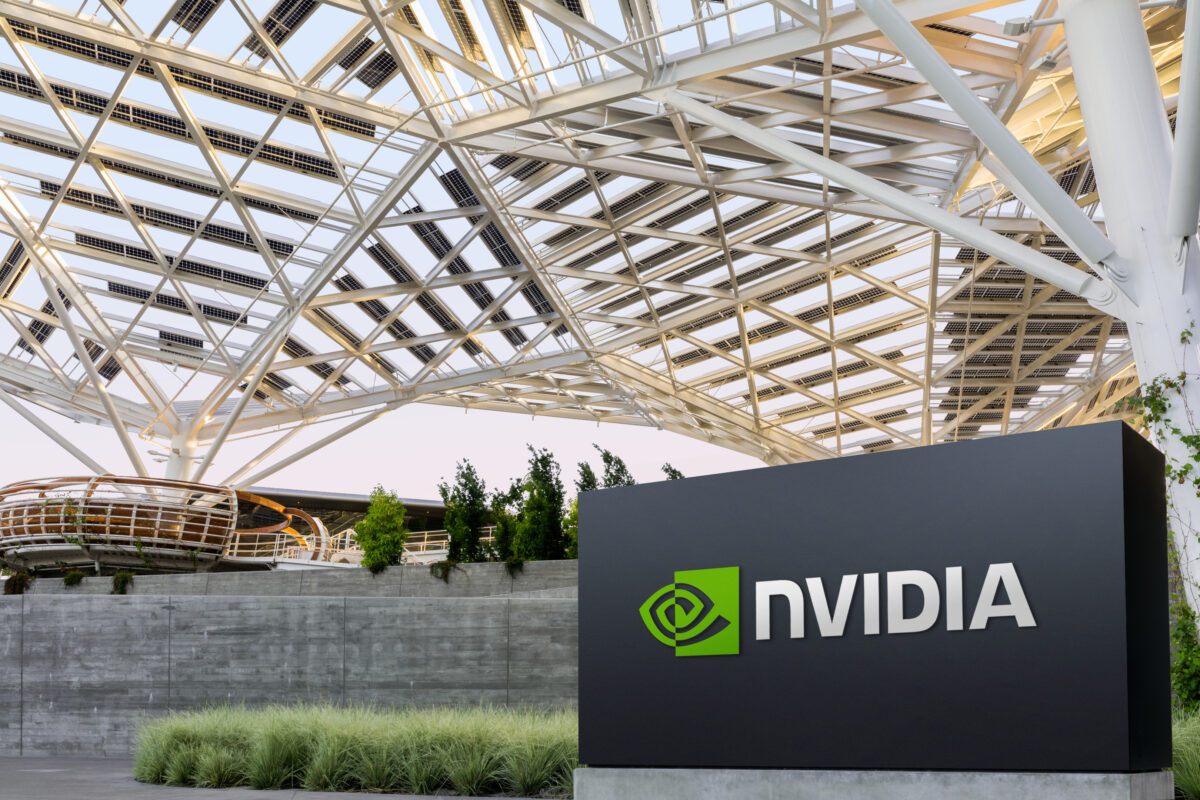In the age of streaming, YouTube has become a go-to platform for entertainment, education, and more. However, there are times when you want to download videos for offline viewing. That’s where SnapTube comes in. This guide will cover everything you need to know about SnapTube, including its features, safety, supported formats, and the ethical implications of video downloading.
Continue reading “SnapTube Your Go-To YouTube Video Downloader”Author: admin
Happy Birthday Jimmy Fallon: King of Late Night Laughter! 19th Sep
Jimmy Fallon is the current king of late-night humor, and today we’re celebrating his birthday by turning up the music! Jimmy has delighted millions of people night after night with his contagious energy, humorous pranks, and endearing nature.
Jimmy Fallon has continuously demonstrated his comedic genius, from his early days on Saturday Night Live to his current position hosting The Tonight Show. In the entertainment world, he is adored for his quick wit, contagious laugh, and ability to connect with both guests and audiences.
Continue reading “Happy Birthday Jimmy Fallon: King of Late Night Laughter! 19th Sep”Happy Birthday, Alison Lohman: A Star Shining Bright!
We’re celebrating to the brilliant and intriguing Alison Lohman today! This amazing actress has made a lasting impression on us through her appearance on the silver screen.
Every character that Alison Lohman has played, from her mesmerizing performance in Big Fish to her terrifying appearance in Drag Me to Hell, has demonstrated her diversity and range, enthralling audiences. Her amazing talent is demonstrated by her ability to portray nuanced, realistic, and complex personalities.
Continue reading “Happy Birthday, Alison Lohman: A Star Shining Bright!”Role of Artificial Intelligence in Climate Change
Introduction
As the global community faces increasingly severe impacts of climate change, finding effective and innovative solutions has become a top priority. Artificial Intelligence (AI), with its vast capabilities and evolving technologies, has emerged as a powerful tool in the fight against climate change. From optimizing energy consumption to predicting extreme weather events, AI is transforming how we approach and address environmental challenges. This blog post explores the multifaceted role of AI in climate change solutions, highlighting its applications, benefits, and potential challenges.

Understanding AI’s Potential in Climate Change Solutions
AI, at its core, refers to the simulation of human intelligence in machines programmed to think and learn. Its applications in climate change solutions are varied and impactful, leveraging machine learning, data analytics, and automation to address environmental issues more efficiently than traditional methods.
1. Enhancing Energy Efficiency
One of the most significant contributions of AI is in improving energy efficiency. Traditional energy systems often involve significant waste and inefficiencies. AI can optimize energy usage in several ways:
- Smart Grids: AI-powered smart grids use real-time data to manage energy distribution more effectively. By predicting energy demand and adjusting supply accordingly, these systems reduce energy waste and improve the reliability of power grids.
- Building Management Systems: AI can control heating, ventilation, and air conditioning (HVAC) systems in buildings to ensure optimal energy use. Machine learning algorithms analyze data from various sensors to adjust settings in real-time, reducing energy consumption and lowering carbon footprints.
- Energy Consumption Forecasting: AI algorithms can predict energy demand patterns by analyzing historical data and current trends. This helps in making informed decisions about energy production and consumption, leading to more efficient use of resources.
2. Advancing Renewable Energy Integration
Renewable energy sources such as solar and wind power are crucial for reducing greenhouse gas emissions. AI enhances the integration and efficiency of these technologies:
- Predictive Maintenance: AI can monitor the health of renewable energy infrastructure, such as wind turbines and solar panels. Predictive maintenance algorithms analyze data from sensors to anticipate failures and schedule maintenance before problems occur, ensuring that renewable energy systems operate at peak efficiency.
- Energy Production Forecasting: AI models forecast energy production from renewable sources based on weather data and historical performance. This helps grid operators balance supply and demand, improving the reliability of renewable energy sources.
- Optimizing Energy Storage: AI helps manage energy storage systems by predicting energy production and consumption patterns. This optimization ensures that energy storage systems, such as batteries, are used efficiently to store excess renewable energy and release it when needed.

3. Improving Climate Modeling and Prediction
Accurate climate modeling and predictions are essential for understanding and mitigating the effects of climate change. AI enhances these processes through:
- Data Analysis: AI algorithms can analyze vast amounts of climate data, identifying patterns and trends that might be missed by traditional methods. This analysis improves the accuracy of climate models and predictions.
- Extreme Weather Prediction: AI can predict extreme weather events, such as hurricanes, heatwaves, and floods, by analyzing historical data and real-time information. Early warning systems powered by AI help communities prepare and respond to these events more effectively.
- Climate Simulation: Machine learning models simulate climate scenarios based on various factors, such as greenhouse gas emissions and land use changes. These simulations provide insights into potential future climate conditions and help in developing strategies for adaptation and mitigation.
4. Optimizing Agriculture and Land Use
Agriculture and land use significantly impact climate change through deforestation, land degradation, and greenhouse gas emissions. AI can optimize these practices to reduce their environmental impact:
- Precision Agriculture: AI-powered tools analyze data from satellite imagery and sensors to optimize agricultural practices. This includes precision irrigation, pest control, and nutrient management, leading to more sustainable farming practices and reduced environmental impact.
- Deforestation Monitoring: AI algorithms analyze satellite images to detect deforestation and illegal logging activities. This monitoring helps in enforcing regulations and protecting vital ecosystems.
- Soil Health Monitoring: AI systems analyze soil health data to recommend practices that improve soil quality and carbon sequestration. Healthy soils play a crucial role in capturing carbon dioxide and mitigating climate change.
5. Enhancing Climate Policy and Decision-Making
AI supports climate policy and decision-making by providing valuable insights and data-driven recommendations:
- Policy Simulation: AI models simulate the effects of different climate policies and regulations. This helps policymakers understand the potential outcomes of their decisions and design more effective climate strategies.
- Decision Support Systems: AI-powered decision support systems provide real-time information and recommendations for managing climate-related risks and opportunities. These systems help governments and organizations make informed decisions about climate action and resource allocation.
- Stakeholder Engagement: AI tools analyze public sentiment and feedback on climate policies and initiatives. This information helps in engaging stakeholders and developing policies that address their concerns and priorities.

Challenges and Considerations
While AI offers numerous benefits in addressing climate change, it also presents several challenges and considerations:
- Data Privacy and Security: AI systems rely on vast amounts of data, raising concerns about data privacy and security. Ensuring that data is protected and used responsibly is crucial for maintaining public trust.
- Ethical Considerations: AI applications in climate change must be designed and implemented ethically. This includes addressing issues such as algorithmic bias, transparency, and accountability in AI decision-making processes.
- Integration with Existing Systems: Integrating AI solutions with existing systems and infrastructure can be challenging. Ensuring compatibility and seamless operation requires careful planning and coordination.
- Resource and Skill Constraints: Developing and implementing AI solutions requires significant resources and expertise. Ensuring that the necessary skills and resources are available for successful AI deployment is essential.

Conclusion
Artificial Intelligence plays a transformative role in addressing climate change, offering innovative solutions to enhance energy efficiency, integrate renewable energy, improve climate modeling, optimize agriculture, and support climate policy. By leveraging AI’s capabilities, we can advance our efforts to mitigate and adapt to climate change, creating a more sustainable future. However, addressing challenges related to data privacy, ethics, integration, and resource constraints is crucial for maximizing AI’s potential in climate change solutions. As AI technology continues to evolve, its role in combating climate change will likely become even more significant, shaping the future of environmental stewardship and sustainability. Tech-arcis
Ultimate Guide On IBM With It’s Technology Powerhouse
IBM, or International Business Machines Corporation, has been a global tech leader for over a century. Founded in 1911, it transitioned from a hardware powerhouse to a leading innovator in software, cloud computing, AI, quantum computing, blockchain, and IT consulting, continuing to drive the future of technology and business.
This blog post delves into IBM’s journey, its diverse product portfolio, the services it offers, and how the company is leveraging technology to stay at the forefront of innovation.
A Brief History of IBM
IBM’s roots date back to the merger of four smaller companies in 1911 to form the Computing-Tabulating-Recording Company (CTR). In 1924, it officially became International Business Machines (IBM). Initially, IBM focused on hardware like punch card systems and mainframe computers, revolutionizing data processing for businesses and governments.
IBM has been instrumental in key technological breakthroughs, including the first commercial computer, the IBM 701 in 1952, and the invention of the magnetic stripe card, which revolutionized modern banking and credit systems.

IBM’s Transition to a Software and Services Leader
IBM, once known for its hardware, shifted its focus to software and services in the 1990s. The sale of its PC division to Lenovo in 2005 marked its transition to IT consulting, cloud computing, AI, and enterprise solutions, while still preserving its legacy in infrastructure technology.
Today, IBM operates across multiple technological domains, providing solutions that address the complex challenges faced by businesses in a digital world.
IBM’s Product Portfolio
IBM’s diverse product portfolio covers hardware, software, cloud services, AI, blockchain, quantum computing, and security. Below are the major components of its product offerings:
1. Hardware Solutions
IBM’s hardware offerings, while reduced from its early days, are still critical in high-performance computing and enterprise environments.
- IBM Z Mainframe: IBM continues to lead in mainframe technology with the IBM Z series, which offers unparalleled processing power, security, and reliability. IBM Z is known for its ability to handle vast amounts of data, making it a crucial tool in industries such as banking, government, and healthcare.
- Power Systems: IBM Power Systems are designed to handle demanding workloads such as AI, analytics, and cloud computing. These systems provide high performance, reliability, and scalability for enterprises looking to manage large-scale applications.
- Storage Systems: IBM offers a wide range of storage solutions, from flash storage to software-defined storage, enabling businesses to manage, store, and analyze vast amounts of data efficiently. IBM’s storage solutions are optimized for cloud environments, offering high availability, security, and flexibility.
2. Software Solutions
IBM is a leading provider of enterprise software, with solutions that address everything from AI and automation to data analytics and hybrid cloud integration.
- Cloud Pak: This suite of containerized software solutions helps businesses modernize applications, integrate data, and automate workflows across multiple cloud environments. IBM Cloud Paks are built on Red Hat OpenShift, enabling companies to adopt a hybrid cloud strategy.
- IBM Watson: One of the most well-known names in AI, IBM Watson provides a range of AI tools and solutions. From natural language processing to machine learning, Watson helps businesses leverage AI to gain insights, automate tasks, and enhance decision-making.
- IBM Db2, a relational database management system, supports various data formats and workloads, offering essential data management and analytics for businesses.
- Blockchain: IBM is a leader in enterprise blockchain solutions. IBM Blockchain allows businesses to create secure, transparent, and scalable networks for industries like supply chain, healthcare, and finance.
3. Cloud Computing
IBM’s cloud computing solutions are central to its growth strategy, offering both public and private cloud environments. As cloud computing becomes the backbone of modern businesses, IBM provides services that help companies move their operations to the cloud, manage hybrid cloud environments, and leverage cloud-native applications.
- IBM Cloud: IBM Cloud is a comprehensive suite of cloud services, including IaaS (Infrastructure-as-a-Service), PaaS (Platform-as-a-Service), and SaaS (Software-as-a-Service). It supports public, private, and hybrid cloud environments, providing flexibility for businesses of all sizes.
- Hybrid Cloud: A key differentiator for IBM is its focus on hybrid cloud computing, which allows businesses to integrate on-premises infrastructure with public and private clouds. With its acquisition of Red Hat in 2019, IBM strengthened its hybrid cloud capabilities by integrating Red Hat OpenShift, an enterprise Kubernetes platform, into its cloud solutions.
- IBM Cloud Satellite: This is IBM’s solution for delivering cloud services anywhere — on-premises, at the edge, or across multiple public clouds. This flexibility is ideal for industries that require data sovereignty, low-latency applications, or edge computing.
4. Artificial Intelligence
IBM Watson is the flagship AI product, and it continues to drive IBM’s leadership in AI and machine learning. Watson enables businesses to extract actionable insights from their data, automate workflows, and enhance decision-making through predictive analytics.
- Watson Assistant: This AI-powered virtual assistant helps businesses automate customer service interactions. It uses natural language processing (NLP) to understand user queries and provide accurate responses, significantly improving customer experiences.
- Watson Discovery: Watson Discovery is an AI-powered search and text analytics platform that helps businesses uncover insights from unstructured data. It’s widely used in industries like healthcare, legal, and finance to find patterns and actionable information within vast datasets.
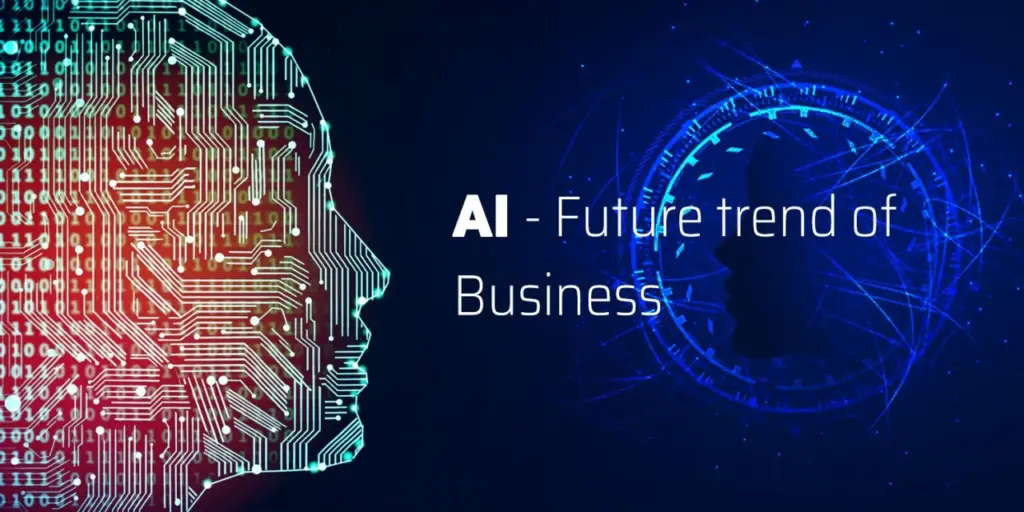
5. Quantum Computing
IBM has emerged as a leader in quantum computing, a field that promises to revolutionize industries by solving problems that are currently unsolvable with classical computers.
- Quantum: IBM is pioneering the development of quantum computing technology, offering businesses access to quantum computers via the cloud through IBM Quantum Experience. IBM Quantum enables organizations and researchers to explore quantum algorithms and their potential applications in industries like chemistry, finance, logistics, and cybersecurity.
- Qiskit: Qiskit is an open-source quantum computing software development framework that allows developers to program IBM’s quantum computers. It’s part of IBM’s commitment to building a quantum ecosystem by democratizing access to this advanced technology.
6. Security Solutions
As businesses face growing cybersecurity threats, IBM offers a comprehensive suite of security products and services to help safeguard digital assets.
- IBM Security QRadar: QRadar is a security information and event management (SIEM) platform that provides real-time threat detection and analysis. It helps businesses monitor their IT environments for potential security breaches and respond quickly to incidents.
- IBM Cloud Identity: This identity-as-a-service (IDaaS) solution helps businesses manage user identities and access controls securely. It integrates with cloud and on-premises applications to streamline user authentication and enhance security.
- IBM X-Force: IBM’s security research and threat intelligence division, X-Force, provides businesses with insights into emerging threats, vulnerabilities, and security trends. X-Force works to prevent, detect, and respond to cyberattacks effectively.

IBM’s Services Portfolio
IBM’s service offerings complement its technological innovations, helping businesses deploy, manage, and optimize their IT infrastructure and digital transformation efforts.
1. IBM Global Business Services (GBS)
IBM Global Business Services provides consulting, business process outsourcing (BPO), and application management services to help organizations improve efficiency, drive innovation, and reduce operational costs. GBS specializes in areas like cloud transformation, AI integration, and data analytics.
2. IBM Global Technology Services (GTS)
IBM Global Technology Services focuses on IT infrastructure management, offering solutions such as managed services, cloud migration, and IT support. GTS helps businesses optimize their IT operations by providing expertise in infrastructure, security, and automation.
3. IBM Consulting
IBM Consulting helps businesses navigate the complexities of digital transformation, offering expertise in areas like hybrid cloud, AI, cybersecurity, and blockchain. With a focus on industry-specific solutions, IBM Consulting enables organizations to unlock new opportunities and improve operational efficiency.
IBM’s Focus on Sustainability and Social Responsibility
Beyond technology and services, IBM is committed to sustainability and corporate social responsibility. The company has implemented a range of initiatives aimed at reducing its environmental footprint and contributing to social causes.
1. Sustainable Computing
IBM is dedicated to building energy-efficient data centers and reducing the environmental impact of its products and operations. IBM’s data centers run on renewable energy, and the company is focused on cutting carbon emissions throughout its supply chain.
2. Corporate Social Responsibility
IBM is involved in numerous initiatives aimed at improving education, healthcare, and social justice. The IBM SkillsBuild program provides free digital skills training to help individuals secure tech industry jobs.

Conclusion: IBM’s Ongoing Influence and Future Prospects
As a tech industry leader, IBM continues to shape the future with a broad portfolio spanning AI, cloud, quantum computing, and cybersecurity. Focused on innovation, sustainability, and social responsibility, IBM drives digital transformation while contributing to global progress.
Through its innovations in AI, quantum computing, and cloud transformation, IBM will continue to shape industries and push the boundaries of the digital age. Tech-arcis
The Ultimate Guide On Biohacking
The idea of “Biohacking” has been increasingly popular in recent years, moving from a specialized interest to a rapidly expanding field that combines biology, technology, and self-optimization. Biohacking, often known as do-it-yourself biology, is a broad term for a variety of methods intended to improve the human body and mind. Simple dietary and lifestyle modifications can be included in this category, as can more involved procedures like implanting electronic devices to monitor or enhance bodily functioning.
Biohacking centers on using technology and science to enhance physical and mental abilities, pushing beyond human limitations. This post explores the origins of biohacking, its innovations, ethical questions, and the future of human enhancement.

The Origins of Biohacking
Biohacking’s roots can be traced back to various fields, including transhumanism, cybernetics, and health optimization. Transhumanism, a philosophical movement that advocates for the use of technology to enhance the human condition, has significantly influenced the development of biohacking. Early proponents of transhumanism envisioned a future where humans could overcome disease, aging, and even death through technological advancements.
In parallel, the field of cybernetics, which studies the interaction between humans and machines, laid the groundwork for integrating technology into the human body. As technology advanced, so too did the possibilities for biohacking. The DIY biology movement, which empowered individuals to explore biology outside of labs, helped fuel the biohacking trend by making scientific tools and knowledge more accessible to everyone.
Key Areas of Biohacking
Biohacking encompasses a broad spectrum of practices, each with its own goals and methodologies. Some of the key areas within biohacking include:
1. Nutritional and Lifestyle Biohacking
Nutritional biohacking involves optimizing diet and lifestyle to achieve better health and performance. This can include practices like intermittent fasting, ketogenic diets, and supplementation with nootropics—substances that are believed to enhance cognitive function. Lifestyle biohackers often experiment with sleep patterns, exercise routines, and stress management techniques to maximize their physical and mental potential.
2. Wearable Technology
Wearable tech, like fitness trackers and smartwatches, makes biohacking accessible by allowing real-time health monitoring, offering insights into activity, heart rate, sleep, and blood sugar. These devices allow users to make data-driven decisions about their health, leading to more personalized and effective interventions.
3. Implantable Devices
For advanced biohackers, implantable devices offer powerful enhancements, from RFID chips tracking vitals to neural implants boosting physical abilities, communication, and restoring lost functions like sight or hearing.
4. Genetic Engineering
Aiming high, genetic engineering in biohacking seeks to alter DNA for desired traits. With CRISPR, biohackers explore enhancing abilities, disease resistance, and slowing aging.

Technology’s Role in Biohacking
Technology is at the heart of biohacking, providing the tools and platforms necessary for experimentation and innovation. The following are some of the most influential technologies driving the biohacking movement:
1. CRISPR and Gene Editing
CRISPR (Clustered Regularly Interspaced Short Palindromic Repeats) is a groundbreaking technology that allows scientists to edit genes with remarkable precision. This technology has opened up new possibilities for biohacking, enabling individuals to modify their genetic code to enhance physical and mental attributes. While CRISPR is primarily used in research settings, some biohackers have begun experimenting with gene editing at home, raising both excitement and ethical concerns.
2. Neural Interfaces
Neural interfaces, also known as brain-computer interfaces (BCIs), are devices that enable direct communication between the brain and external devices. These interfaces have the potential to revolutionize the way we interact with technology, allowing for thought-controlled devices, enhanced cognitive abilities, and even the potential for memory augmentation. Companies like Neuralink are at the forefront of developing BCIs, with the goal of integrating human consciousness with artificial intelligence.
3. Wearables and Sensors
Wearable technology has become increasingly sophisticated, offering biohackers a wealth of data to analyze and optimize their health. Advanced sensors can monitor everything from blood oxygen levels to brainwave activity, providing real-time feedback on physiological and cognitive states. This data can be used to fine-tune diet, exercise, and sleep patterns, as well as to detect potential health issues before they become serious.
4. Artificial Intelligence and Machine Learning
Artificial intelligence (AI) and machine learning are playing an increasingly important role in biohacking by enabling the analysis of large datasets to identify patterns and optimize interventions. AI can help biohackers make sense of the vast amounts of data generated by wearables, genetic tests, and other technologies, providing personalized recommendations for health and performance optimization. Machine learning algorithms can also be used to predict the outcomes of biohacking experiments, reducing the risk of adverse effects.
The Boons of Biohacking
The rise of biohacking has brought with it numerous benefits, offering individuals new ways to take control of their health and enhance their lives. Some of the most significant advantages of biohacking include:
1. Personalized Health Optimization
Biohacking allows individuals to tailor their health interventions to their unique biology, leading to more effective and personalized outcomes. By tracking biomarkers, genetic information, and lifestyle factors, biohackers can identify what works best for their bodies and make informed decisions about diet, exercise, and supplementation.
2. Empowerment and Self-Experimentation
Biohacking empowers individuals to take control of their health and well-being, encouraging self-experimentation and discovery. This DIY approach fosters a sense of autonomy and encourages people to explore new ways of optimizing their physical and mental performance.
3. Potential for Enhanced Longevity
Many biohackers are motivated by the desire to extend their lifespan and improve their quality of life as they age. Through practices like caloric restriction, genetic modification, and the use of anti-aging compounds, biohackers aim to slow the aging process and potentially achieve longer, healthier lives.
4. Innovation in Healthcare
The biohacking movement has the potential to drive innovation in healthcare, leading to new treatments and technologies that could benefit society as a whole. By pushing the boundaries of what is possible, biohackers are contributing to the development of novel therapies and interventions that could one day become mainstream.

The Bane of Biohacking
While biohacking offers many potential benefits, it also raises significant ethical, safety, and societal concerns. Some of the key challenges and risks associated with biohacking include:
1. Ethical Concerns
Biohacking, particularly in the realm of genetic engineering and neural interfaces, raises profound ethical questions. The ability to modify human genes or enhance cognitive abilities could lead to issues of inequality, access, and consent. There is also the risk of unintended consequences, such as the creation of new diseases or the exacerbation of social divides.
2. Safety Risks
Biohacking, especially when conducted outside of professional laboratory settings, carries inherent risks. Self-experimentation with unproven techniques or substances can lead to serious health complications, including infections, allergic reactions, and long-term damage. The lack of regulation and oversight in the biohacking community further exacerbates these risks.
3. Legal and Regulatory Challenges
The rapid pace of technological advancement in biohacking has outpaced the development of legal and regulatory frameworks. This has created a gray area where biohackers operate without clear guidelines or protections. Governments and regulatory bodies are grappling with how to balance innovation with the need to protect public health and safety.
4. Social Implications
The widespread adoption of biohacking technologies could have far-reaching social implications. For example, the ability to enhance physical or cognitive abilities through technology could lead to new forms of inequality, where those with access to biohacking tools gain an unfair advantage over others. Additionally, the normalization of biohacking could create pressure to conform to new standards of health and performance, leading to societal changes in how we define success and well-being.
The Future of Biohacking
As technology continues to advance, the field of biohacking is poised to grow and evolve in new and unexpected ways. Some potential future developments in biohacking include:
1. Integration with Artificial Intelligence
The integration of AI with biohacking technologies could lead to even more personalized and effective health interventions. AI-driven platforms could analyze vast amounts of data from wearables, genetic tests, and other sources to create highly individualized health plans. This could result in more precise and targeted interventions, improving outcomes and reducing risks.
2. Advancements in Genetic Engineering
As genetic engineering technologies like CRISPR become more refined, the possibilities for biohacking will expand. Future biohackers may have the ability to edit their genes to achieve specific physical, cognitive, or even emotional traits. This could lead to new frontiers in human enhancement, as well as new ethical and societal challenges.
3. Mainstream Adoption of Biohacking Practices
As biohacking gains popularity, it is likely that some practices will become mainstream. Wearable technology, personalized nutrition, and genetic testing are already becoming more widely adopted, and future advancements could make biohacking accessible to a broader audience. This could lead to a shift in how society views health and wellness, with a greater emphasis on self-optimization and prevention.
4. Emergence of New Biohacking Communities
The rise of biohacking has given birth to a global community of enthusiasts, researchers, and entrepreneurs. As the movement grows, new communities and networks are likely to emerge, fostering collaboration and innovation. These communities could play a crucial role in shaping the future of biohacking, driving the development of new technologies and best practices.

Conclusion
The rise of biohacking represents a profound shift in how we approach health, wellness, and human potential. By leveraging technology and scientific knowledge, biohackers are pushing the boundaries of what is possible, offering new ways to enhance the human body and mind. While the movement holds great promise, it also raises significant ethical, safety, and societal concerns that must be carefully navigated. As we look to the future, the challenge will be to balance the potential benefits of biohacking with the need to protect individuals and society as a whole. Whether through wearable technology, genetic engineering, or neural interfaces, the future of biohacking promises to be both exciting and transformative, offering new possibilities for human enhancement and self-optimization. Tech-arcis
Top 7 TikTok Video Downloader APP
TikTok has become a cultural phenomenon, with millions of users around the world creating, sharing, and enjoying short videos. However, there are times when you might want to download a TikTok video for offline viewing, sharing on other platforms, or saving for later. While TikTok itself offers limited downloading options, several third-party apps and tools can help you download TikTok videos more efficiently. In this article, we’ll explore what a TikTok downloader is, when and where you might need one, who uses them, why they’re popular, and whose needs they best serve. We’ll also look at the top 7 alternatives to TikTok’s built-in downloading feature.
Continue reading “Top 7 TikTok Video Downloader APP”Autonomous Drones: Exploring the Technology and Applications
One of the most revolutionary developments in technology in recent years is the evolution of autonomous drones. Drones are becoming a necessary tool for many businesses, from consumer to military, and their capabilities are growing quickly. Autonomous drones have the potential to completely transform a variety of industries in the future, including urban planning, logistics, agriculture, and environmental monitoring. This blog post explores the patterns influencing the advancement of autonomous drones, their uses, and the opportunities and difficulties that may arise in the future.

1. Introduction to Autonomous Drones
Autonomous drones, or unmanned aerial vehicles (UAVs), operate without direct human intervention. Unlike traditional remote-controlled drones, autonomous drones leverage advanced technologies such as artificial intelligence (AI), machine learning, computer vision, and advanced sensors to perform complex tasks independently. These drones can navigate, avoid obstacles, and make decisions in real-time, making them ideal for various applications.
2. Technological Trends Shaping Autonomous Drones
Several technological trends are fueling the development of autonomous drones, enhancing their capabilities and expanding their applications:
- Artificial Intelligence (AI) and Machine Learning: AI enables drones to analyze data in real-time, recognize patterns, and make decisions autonomously. Machine learning algorithms allow drones to improve their performance over time, learning from past experiences and adapting to new environments.
- Advanced Sensors and Computer Vision: Modern drones are equipped with a variety of sensors, including LiDAR, infrared, and ultrasonic sensors, allowing them to detect and avoid obstacles, even in complex environments. Computer vision technology enables drones to interpret visual data, recognize objects, and perform tasks like mapping and surveillance.
- 5G Connectivity: The rollout of 5G networks offers faster data transmission and lower latency, enabling drones to communicate with each other and ground control stations more effectively. This connectivity is crucial for real-time data processing and coordination in complex operations.
- Edge Computing: Edge computing allows data processing to occur closer to the drone, reducing the need for constant communication with central servers. This capability is essential for autonomous drones operating in remote or high-risk areas where connectivity may be limited.
- Battery and Power Management: Advances in battery technology and power management systems are extending the flight times of autonomous drones, enabling longer missions and reducing downtime for recharging.
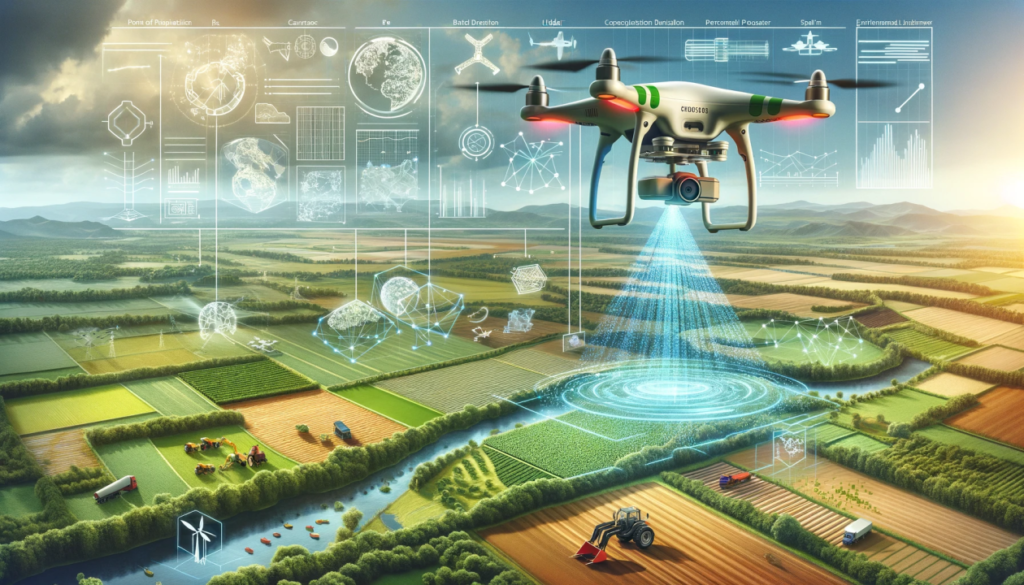
3. Applications of Autonomous Drones
The applications of autonomous drones are vast and diverse, with new use cases emerging regularly. Some of the most promising areas include:
- Agriculture: Autonomous drones are transforming precision agriculture by providing farmers with detailed insights into crop health, soil conditions, and pest infestations. Equipped with multispectral sensors, drones can analyze large fields quickly and accurately, allowing farmers to optimize irrigation, fertilization, and pest control.
- Logistics and Delivery: Companies like Amazon and UPS are exploring the use of autonomous drones for last-mile delivery. These drones can navigate urban environments, avoiding traffic and obstacles, to deliver packages quickly and efficiently. This technology has the potential to revolutionize the logistics industry, reducing delivery times and costs.
- Surveillance and Security: Autonomous drones are increasingly used in surveillance and security operations. They can monitor large areas, detect intrusions, and provide real-time footage to security teams. In disaster management, drones can quickly assess damage, locate survivors, and deliver aid to hard-to-reach areas.
- Environmental Monitoring: Drones are valuable tools for environmental monitoring, capable of collecting data on air quality, wildlife populations, and deforestation. Autonomous drones can operate in harsh environments, providing continuous monitoring and data collection without human intervention.
- Urban Planning and Infrastructure Inspection: In urban planning, drones can create detailed 3D maps of cities, helping planners design more efficient and sustainable urban environments. For infrastructure inspection, drones can autonomously inspect bridges, power lines, and pipelines, identifying potential issues before they become critical.
- Mining and Resource Exploration: Autonomous drones are used in mining for tasks such as surveying, mapping, and monitoring. They can navigate hazardous environments, providing data on ore deposits, geological features, and environmental conditions.
- Emergency Response: In emergencies, drones can be deployed to assess the situation, locate victims, and deliver critical supplies. Their ability to operate in challenging environments makes them invaluable tools for first responders.

4. Challenges Facing Autonomous Drones
While the future of autonomous drones is promising, several challenges must be addressed to unlock their full potential:
- Regulatory and Legal Issues: The widespread use of autonomous drones raises significant regulatory and legal challenges. Governments around the world are grappling with how to regulate drone operations, ensure safety, and protect privacy. Creating a unified regulatory framework that balances innovation with public safety is crucial.
- Safety and Reliability: Ensuring the safety and reliability of autonomous drones is a significant challenge. Drones must be able to operate safely in various conditions, including bad weather, crowded airspaces, and complex urban environments. Developing fail-safe systems and robust communication networks is essential to prevent accidents and ensure the safe integration of drones into airspace.
- Security Concerns: As drones become more autonomous, there is an increased risk of hacking and cyber-attacks. Securing the communication links and onboard systems of drones is critical to preventing malicious actors from taking control of drones and using them for nefarious purposes.
- Ethical Considerations: The use of autonomous drones, particularly in surveillance and military applications, raises ethical questions about privacy, accountability, and the potential for misuse. Establishing clear ethical guidelines and oversight mechanisms is necessary to address these concerns.
- Public Perception and Acceptance: Public perception of drones can influence their adoption and integration into society. Concerns about privacy, noise, and safety can lead to resistance from communities. Educating the public about the benefits of drones and addressing their concerns will be important for gaining widespread acceptance.
5. Opportunities for the Future
Despite these challenges, the future of autonomous drones presents significant opportunities:
- Economic Growth: The drone industry is expected to contribute significantly to economic growth, creating jobs and stimulating innovation in various sectors. As drones become more integrated into industries like agriculture, logistics, and construction, they will drive efficiency and productivity gains.
- Sustainability: Drones have the potential to contribute to sustainability efforts by reducing the environmental impact of various activities. For example, drones can optimize agricultural practices, reducing the need for water and pesticides. In logistics, drones can reduce the carbon footprint of delivery services by replacing traditional vehicles with electric-powered drones.
- Disaster Relief and Humanitarian Aid: Drones can play a critical role in disaster relief and humanitarian aid efforts. Their ability to quickly assess damage, deliver supplies, and locate survivors can save lives in the aftermath of natural disasters and other emergencies.
- Innovation in AI and Robotics: The development of autonomous drones is driving innovation in AI and robotics. Advances in these fields will have broader implications, leading to new applications and technologies beyond drones.
- Enhanced Data Collection and Analysis: Autonomous drones can collect vast amounts of data, providing valuable insights for industries ranging from agriculture to environmental monitoring. This data can be used to make informed decisions, optimize processes, and improve outcomes.
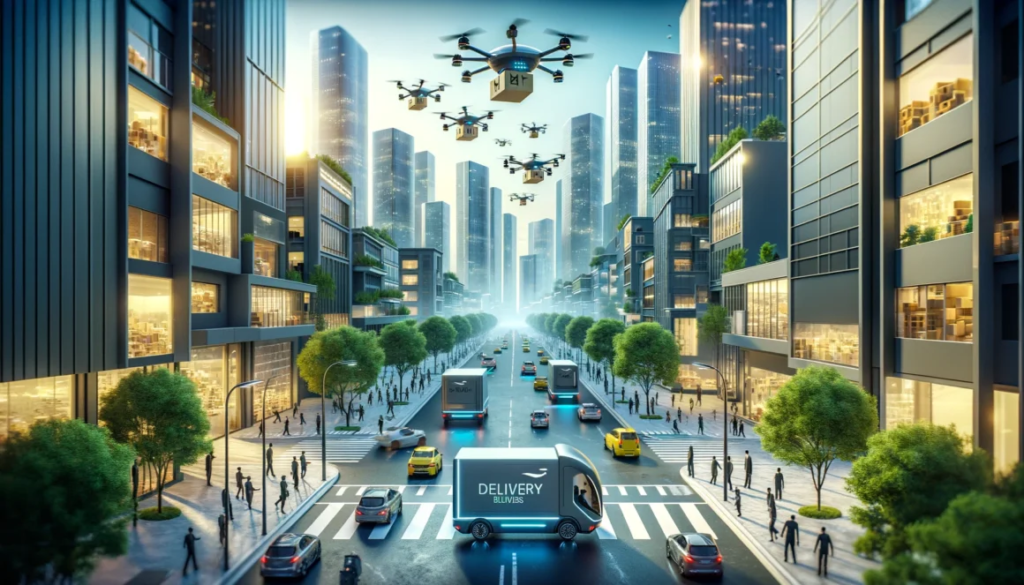
6. Conclusion
The future of autonomous drones is bright, with the potential to transform industries and improve lives. As technology advances, we can expect to see even more sophisticated drones capable of performing complex tasks with minimal human intervention. However, realizing this potential will require addressing regulatory, safety, and ethical challenges while fostering innovation and public acceptance. By doing so, we can harness the power of autonomous drones to create a safer, more efficient, and sustainable world.
In the coming years, autonomous drones will likely become an integral part of our daily lives, from delivering packages to monitoring the environment and assisting in emergency response. The key to their success will be the ability to balance technological advancements with responsible deployment, ensuring that these powerful tools are used for the greater good. Tech-arcis
The Ultimate Guide On NVIDIA Technological Power
NVIDIA Corporation is a titan in the rapidly changing world of technology, constantly pushing the envelope of what is conceivable. NVIDIA is well-known for its graphics processing units (GPUs), but its impact goes much beyond the world of video games. Is leading the way in a wide range of technical advances, from deep learning and artificial intelligence (AI) revolutions to the advancement of self-driving car technologies. This blog post explores the company’s technological innovations, their effects on many industries, and the direction that its ground-breaking work will take going forward.
A Brief History of NVIDIA
NVIDIA was founded in 1993 by Jensen Huang, Chris Malachowsky, and Curtis Priem in Santa Clara, California. The company initially focused on creating graphics hardware for gaming and professional markets. The launch of their first product, the NV1, marked the beginning of NVIDIA’s journey into the world of GPUs. However, it was the introduction of the RIVA series and later the GeForce 256 in 1999 that cemented NVIDIA’s reputation as a leader in graphics technology.
Over the years, NVIDIA has expanded its product lineup to include high-performance computing solutions, AI platforms, and automotive technologies. This expansion has solidified its position as a multifaceted technology company with a diverse portfolio.

NVIDIA’s Core Technologies
1. Graphics Processing Units (GPUs)
At the heart of NVIDIA’s success lies its GPUs, which have become synonymous with high-performance graphics and computing. NVIDIA’s GPUs excel at rendering intricate graphics and tackling demanding computational tasks with remarkable speed and efficiency.
- The GeForce Series targets gamers and consumers seeking high-performance graphics for both gaming and creative endeavors. The GeForce RTX 40 series, for instance, boasts advanced features such as real-time ray tracing and AI-enhanced graphics, delivering unprecedented visual fidelity and performance.
- Quadro Series: For professionals in fields like design, animation, and simulation, the Quadro series offers workstation-grade GPUs that provide superior precision and stability. These GPUs excel in handling demanding tasks like 3D modeling and video editing with optimized performance.
- TITAN Series: TITAN GPUs bridge the gap between consumer and professional hardware, offering high-end performance for both gaming and computational tasks. They are popular among researchers, engineers, and content creators who require immense processing power.
2. CUDA (Compute Unified Device Architecture)
CUDA is NVIDIA’s parallel computing platform and application programming interface (API) that allows developers to use GPUs for general-purpose processing. By leveraging CUDA, programmers can tap into the massive parallel processing power of NVIDIA GPUs, accelerating a wide range of applications beyond graphics, including scientific simulations, financial modeling, and deep learning.
CUDA has transformed research and industry by making complex computations more efficient. For example, researchers in fields like genomics and climate modeling use CUDA to handle vast datasets and perform intricate calculations that would be impractical on traditional CPUs.
3. AI and Deep Learning
NVIDIA has been a pioneer in the development and deployment of AI and deep learning technologies. The company’s GPUs drive AI model training and inference tasks through their powerful parallel processing capabilities.
- Tensor Cores, first introduced with the Volta architecture and refined in the Turing and Ampere architectures, serve as specialized hardware that boosts the performance of AI and deep learning tasks. They provide significant improvements in training times and inference performance for neural networks.
- NVIDIA AI Platform: NVIDIA’s AI platform encompasses a range of products and services designed to support AI development and deployment. This includes the NVIDIA DGX systems, which are purpose-built for AI research and development, and the NVIDIA NGC (NVIDIA GPU Cloud) registry, which offers pre-trained models, optimized frameworks, and software tools for AI developers.
4. Automotive Technologies
NVIDIA has also made substantial strides in automotive technology, particularly in the realm of autonomous driving. The company’s DRIVE platform is a comprehensive solution for developing and deploying self-driving vehicles.
- NVIDIA DRIVE AGX: This platform provides the hardware and software needed for developing autonomous driving systems. It includes high-performance computing units, sensor processing capabilities, and deep learning frameworks to enable real-time perception and decision-making in vehicles.
- Simulation and Testing: NVIDIA uses its powerful GPUs and simulation technologies to create virtual environments for testing autonomous driving systems. This method enables manufacturers to replicate different driving conditions and scenarios, verifying the robustness and reliability of self-driving systems before their road deployment.
5. Data Centers and Cloud Computing
NVIDIA’s impact on data centers and cloud computing has been transformative. The company’s GPUs accelerate diverse data center workloads, such as AI training, data analytics, and high-performance computing (HPC).
- NVIDIA A100 Tensor Core GPUs are crafted to manage a variety of tasks, including training extensive AI models and executing intricate simulations. They offer exceptional performance for data center applications, enabling faster insights and more efficient processing.
- NVIDIA BlueField Data Processing Units (DPUs) handle and speed up data center infrastructure tasks, including data storage, networking, and security. They help improve data center efficiency and performance by handling these tasks independently from the main CPU.
- NVIDIA EGX Platform: The EGX platform extends the power of NVIDIA GPUs to edge computing, allowing organizations to deploy AI and machine learning applications closer to the data source. This is particularly useful for real-time analytics and decision-making in industries like manufacturing, retail, and healthcare.
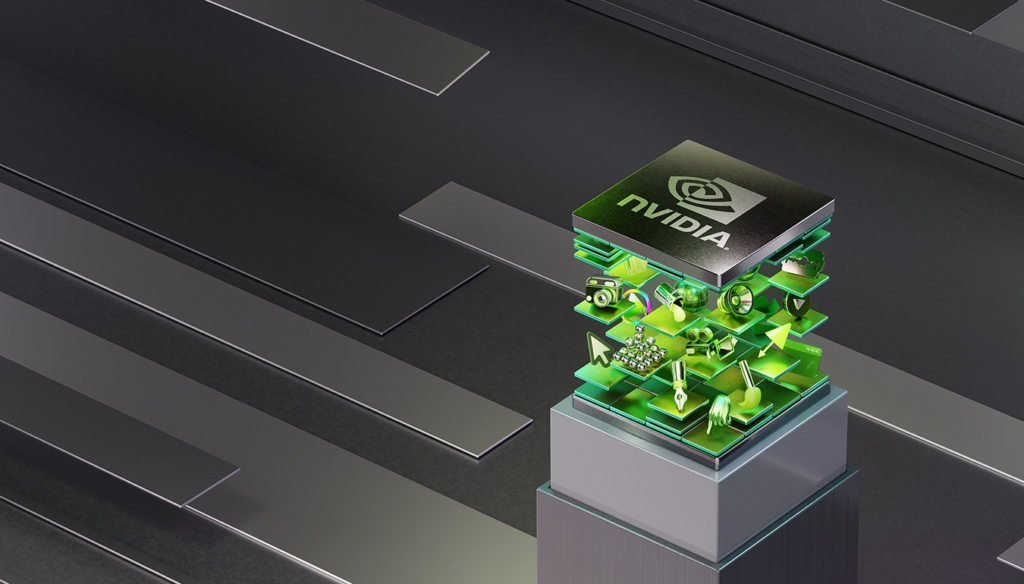
Impact Across Industries
NVIDIA’s technological innovations have far-reaching implications across various industries, transforming how we interact with technology and paving the way for new possibilities.
1. Gaming
NVIDIA’s GPUs have been a cornerstone of the gaming industry, enabling immersive experiences with cutting-edge graphics and high frame rates. Technologies such as real-time ray tracing and DLSS (Deep Learning Super Sampling) have set new standards for visual fidelity and performance in gaming.
Ray tracing simulates the way light interacts with objects in a scene, producing more realistic reflections, shadows, and lighting effects. DLSS uses AI to upscale lower-resolution images, providing better performance without compromising image quality. These technologies have enhanced the gaming experience, allowing players to enjoy more realistic and visually stunning games.
2. Healthcare
In the healthcare sector, NVIDIA’s technologies are being used to accelerate medical research and improve patient care. AI-powered imaging solutions can analyze medical images with high accuracy, aiding in early diagnosis and personalized treatment plans. For instance, AI algorithms can detect anomalies in MRI scans or identify patterns in genomic data that might indicate a predisposition to certain diseases.
Researchers use NVIDIA’s GPUs for simulations and drug discovery, which helps them model intricate biological processes and find potential drug candidates more effectively.
3. Finance
In finance, NVIDIA’s GPUs are employed for high-frequency trading, risk modeling, and fraud detection. The ability to process vast amounts of financial data in real time is crucial for making informed trading decisions and managing financial risks. AI and machine learning models powered by NVIDIA’s GPUs can analyze market trends, predict stock prices, and identify unusual trading patterns.
4. Manufacturing
Manufacturers use NVIDIA’s technology for a range of applications, including quality control, predictive maintenance, and process optimization. Computer vision systems powered by NVIDIA GPUs can inspect products for defects, while AI models can predict equipment failures and optimize production schedules.
The integration of AI and robotics in manufacturing is driving innovation and efficiency, enabling smarter and more flexible production processes.
5. Entertainment and Media
In the entertainment and media industry, NVIDIA’s GPUs are used for rendering and animation, enabling the creation of visually stunning movies, TV shows, and visual effects. The ability to render complex scenes and simulations in real time has revolutionized how content is created and consumed.
AI-driven tools for video editing, content generation, and virtual production are also making it easier for creators to bring their visions to life, pushing the boundaries of storytelling and visual artistry.
The Future of NVIDIA
As NVIDIA continues to innovate and expand its technological horizons, several key trends and developments are likely to shape the future of the company and its impact on the world.
1. AI and Machine Learning
AI and machine learning will remain central to NVIDIA’s strategy. The company is likely to continue developing advanced AI models and frameworks, further enhancing the capabilities of its GPUs and other hardware. The growth of AI applications across industries will drive demand for NVIDIA’s solutions, as businesses seek to leverage AI for competitive advantage.
2. Quantum Computing
Quantum computing represents a new frontier in computing power, and NVIDIA is exploring ways to integrate quantum computing with its existing technologies. While still in its early stages, quantum computing has the potential to revolutionize fields such as cryptography, optimization, and material science.
3. Edge Computing
The rise of edge computing will drive demand for NVIDIA’s solutions that enable real-time data processing and analytics at the edge of the network. As more devices and sensors generate data, the need for efficient and scalable edge computing solutions will grow.
4. Sustainable Technology
Sustainability is becoming increasingly important in the tech industry, and NVIDIA is likely to focus on developing energy-efficient and environmentally friendly technologies. This includes optimizing the power consumption of its GPUs and exploring ways to reduce the environmental impact of its products and operations.
5. Autonomous Vehicles
The development of autonomous vehicles will continue to be a major focus for NVIDIA. As self-driving technology advances, NVIDIA’s DRIVE platform will play a crucial role in enabling safer and more efficient transportation solutions.

NVIDIA Services: Powering Innovation Across Industries
NVIDIA Corporation is widely recognized for its high-performance graphics processing units (GPUs) and computing solutions. However, the company also offers a range of services that extend its technological expertise to various sectors, from AI and deep learning to data centers and automotive applications. This blog post explores the diverse range of services offered by NVIDIA, detailing how these services are transforming industries and driving innovation.
1. NVIDIA AI and Deep Learning Services
NVIDIA has established itself as a leader in the AI and deep learning space. The company offers several services and platforms designed to facilitate the development, deployment, and optimization of AI models.
NVIDIA NGC (NVIDIA GPU Cloud)
NVIDIA NGC is a comprehensive cloud-based platform that provides a repository of GPU-optimized software, tools, and pre-trained models for AI and data science. Key features include:
- Pre-Trained Models: NGC offers a wide range of pre-trained AI models that can be used for various applications, such as natural language processing, computer vision, and speech recognition. These models are optimized for NVIDIA GPUs, ensuring high performance and efficiency.
- AI Frameworks: The platform provides access to popular AI frameworks and libraries, including TensorFlow, PyTorch, and RAPIDS. These frameworks are optimized for NVIDIA GPUs, enabling faster training and inference for AI models.
- Containerized Applications: NGC offers Docker containers with optimized software stacks, allowing developers to deploy AI applications quickly and efficiently. These containers include all necessary dependencies and are designed to leverage the full power of NVIDIA GPUs.
NVIDIA Deep Learning AI (DLA)
NVIDIA DLA is a set of hardware and software solutions designed for deploying deep learning models in edge devices and embedded systems. DLA provides high-performance inference capabilities while maintaining low power consumption. Key components include:
- NVIDIA Jetson Platform: The Jetson platform includes a range of embedded computing modules and development kits designed for AI and robotics applications. Jetson modules are used in various fields, from autonomous drones to smart cameras and robotics.
- NVIDIA TensorRT: TensorRT is a high-performance deep learning inference library that optimizes AI models for deployment on NVIDIA GPUs and embedded devices. It offers features such as model optimization, precision calibration, and runtime acceleration to enhance inference performance.
2. Data Center and Cloud Computing Services
NVIDIA’s data center and cloud computing services are designed to accelerate a variety of workloads, from AI training to high-performance computing (HPC). These services cater to enterprises, researchers, and cloud service providers seeking to leverage NVIDIA’s GPU technology for enhanced performance and efficiency.
NVIDIA A100 Tensor Core GPUs
The A100 Tensor Core GPUs are a key component of NVIDIA’s data center solutions. They are designed to handle a wide range of workloads, including AI training, data analytics, and HPC. Features of the A100 GPUs include:
- Multi-Instance GPU (MIG): MIG technology allows a single A100 GPU to be partitioned into multiple virtual GPUs, enabling efficient utilization of resources and improved workload isolation.
- NVLink and NVSwitch: These high-bandwidth interconnect technologies enable fast data transfer between GPUs, supporting scalable and efficient multi-GPU configurations for large-scale AI training and HPC applications.
NVIDIA DGX Systems
NVIDIA DGX systems are purpose-built for AI research and development, offering integrated hardware and software solutions for training and deploying AI models. Key products include:
- DGX Station: A powerful workstation designed for AI development, offering multi-GPU configurations and a comprehensive software stack for data scientists and researchers.
- DGX A100: A data center server equipped with multiple A100 GPUs, providing exceptional performance for AI training, data analytics, and HPC workloads.
NVIDIA BlueField Data Processing Units (DPUs)
NVIDIA BlueField DPUs are designed to offload and accelerate data center infrastructure tasks, such as data storage, networking, and security. Features of BlueField DPUs include:
- Data Plane Development Kit (DPDK): A set of libraries and drivers that enable high-performance packet processing and networking capabilities.
- Storage Acceleration: BlueField DPUs provide hardware acceleration for storage tasks, enhancing data throughput and reducing latency in data centers.
NVIDIA EGX Platform
The NVIDIA EGX platform extends the power of NVIDIA GPUs to edge computing environments. It enables real-time AI and machine learning applications at the edge of the network. Key components include:
- EGX Servers: High-performance edge servers equipped with NVIDIA GPUs, designed for running AI inference workloads in real-time.
- Software Tools: EGX includes software tools and frameworks for deploying and managing AI applications at the edge, ensuring seamless integration with existing infrastructure.
3. Automotive and Transportation Services
NVIDIA’s automotive services focus on developing and deploying advanced driver assistance systems (ADAS) and autonomous driving technologies. The NVIDIA DRIVE platform provides a comprehensive suite of solutions for the automotive industry.
NVIDIA DRIVE AGX
The NVIDIA DRIVE AGX platform provides the hardware and software necessary for developing and deploying autonomous driving systems. Key features include:
- DRIVE Orin: The latest hardware platform for autonomous driving, offering high-performance computing capabilities and support for advanced AI algorithms.
- Hyperion: A reference architecture that includes sensors, computing units, and software for building self-driving vehicles. DRIVE Hyperion provides a complete solution for sensor fusion, perception, and decision-making.
Simulation and Testing
NVIDIA leverages its GPU technology to create virtual environments for testing and validating autonomous driving systems. Key tools include:
- NVIDIA DRIVE Sim: A simulation platform that enables the creation of virtual driving scenarios for testing autonomous vehicles. DRIVE Sim allows manufacturers to simulate a wide range of driving conditions and scenarios, ensuring the robustness and reliability of self-driving systems.
- NVIDIA Omniverse: A collaborative platform for 3D content creation and simulation, used for developing virtual environments and digital twins for autonomous driving and other applications.
4. Professional Visualization Services
NVIDIA provides a range of services for professional visualization, catering to industries such as design, architecture, and media production. These services are designed to enhance productivity and creativity through advanced visualization and rendering technologies.
NVIDIA RTX Technology
NVIDIA RTX technology includes GPUs and software designed for real-time ray tracing and AI-enhanced graphics. Key features include:
- Ray Tracing: RTX GPUs support real-time ray tracing, allowing for photorealistic rendering of scenes with accurate lighting, shadows, and reflections.
- DLSS (Deep Learning Super Sampling): DLSS uses AI to upscale lower-resolution images, providing improved performance and image quality in real-time applications.
Quadro and RTX Professional GPUs
The Quadro and RTX series of professional GPUs are designed for high-end visualization and rendering tasks. These GPUs offer features such as:
- Precision and Stability: Professional GPUs provide accurate color reproduction and stability for demanding applications in design, animation, and simulation.
- Multi-GPU Configurations: Support for multi-GPU setups allows for enhanced performance and scalability in complex visualization tasks.
NVIDIA Omniverse Enterprise
Omniverse Enterprise is a platform for collaborative 3D content creation and simulation. It provides tools for virtual production, real-time collaboration, and digital twin development. Key components include:
- Omniverse Kit: A development toolkit for creating custom applications and extensions within the Omniverse ecosystem.
- Omniverse Nucleus: A data management and collaboration platform that facilitates real-time collaboration and data sharing among teams working on 3D projects.
5. Education and Research Services
NVIDIA is committed to supporting education and research through various programs and initiatives. These services aim to empower the next generation of innovators and researchers by providing access to cutting-edge technology and resources.
NVIDIA Academic Programs
NVIDIA offers a range of academic programs and resources for students, educators, and researchers. Key initiatives include:
- GPU Grant Program: Provides access to NVIDIA GPUs for academic research and projects, enabling researchers to leverage high-performance computing for their work.
- Deep Learning Institute (DLI): Offers training and certification programs in AI and deep learning. The DLI provides hands-on courses and workshops to help students and professionals develop skills in AI and machine learning.
NVIDIA Research Partnerships
NVIDIA collaborates with academic institutions, research organizations, and industry partners to advance technology and drive innovation. These partnerships support joint research projects, technology development, and knowledge sharing.

Conclusion
NVIDIA’s diverse range of services reflects the company’s commitment to driving innovation and solving complex challenges across various industries. From AI and deep learning to data centers, automotive technologies, professional visualization, and education, NVIDIA’s services are designed to empower organizations and individuals to leverage cutting-edge technology for enhanced performance and productivity.
As NVIDIA continues to expand its service offerings and explore new areas of technological advancement, it will undoubtedly play a pivotal role in shaping the future of technology and its applications. Whether through accelerating AI research, advancing autonomous driving, or enhancing professional visualization, NVIDIA’s services are at the forefront of technological progress, enabling new possibilities and transforming industries worldwide. Tech-arcis
The Ultimate Overview on Alphabet Inc.
Prominent American multinational conglomerate Alphabet Inc. is well-known for its wide range of interests and ground-breaking inventions. Alphabet, which was founded in 2015 as Google’s parent company, signifies a dramatic change in the organizational design of one of the most powerful technology companies in the world. This blog post offers a thorough overview of Alphabet by exploring the company’s history, organizational structure, major business units, financial performance, and future prospects.
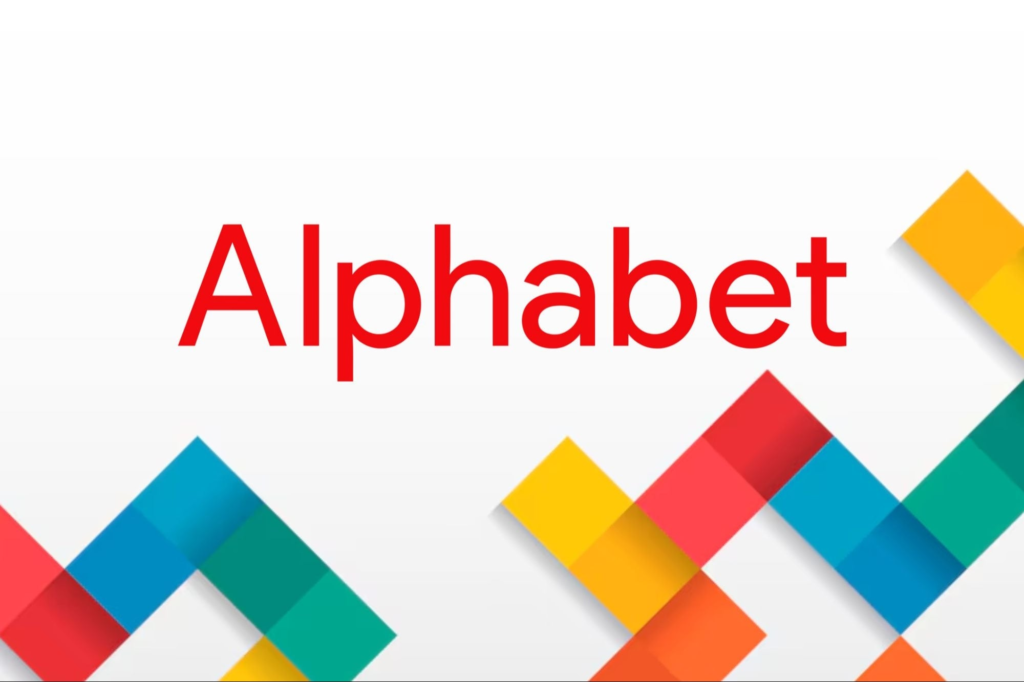
History and Formation
The Origins of Google
The story of Alphabet begins with Google Inc., which was founded by Larry Page and Sergey Brin in September 1998 while they were Ph.D. students at Stanford University. Google quickly gained prominence for its innovative search engine, which utilized a novel algorithm to deliver more relevant search results than its competitors. The company’s rapid growth and success led to its initial public offering (IPO) in 2004, which further solidified its position in the tech industry.
The Birth of Alphabet Inc.
In August 2015, Google underwent a significant reorganization, resulting in the creation of Alphabet Inc. This restructuring aimed to better manage the company’s expanding portfolio of businesses beyond its core search engine and advertising operations. Alphabet Inc. was established as the parent holding company, with Google becoming one of its main subsidiaries. This move allowed for greater transparency and focus on various business segments by segregating different operations into distinct entities.
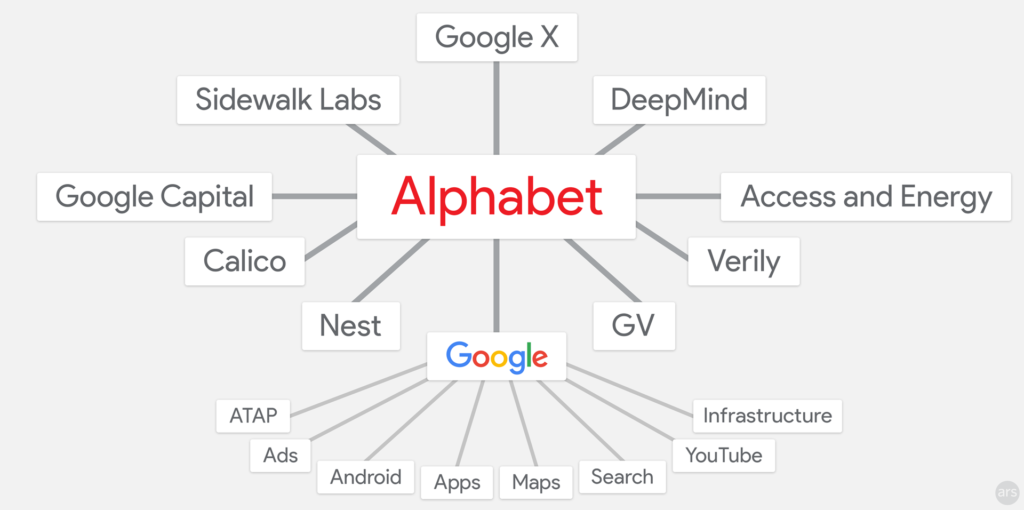
Organizational Structure
The Alphabet Corporate Structure
Alphabet Inc. operates with a unique corporate structure, which consists of a collection of independent companies under its umbrella. The primary components of this structure include:
- Google LLC: The largest and most well-known subsidiary of Alphabet, Google LLC continues to focus on its core products, such as search, advertising, Android, YouTube, and Google Cloud.
- Other Bets: This category encompasses a range of ventures and companies that are not directly related to Google’s core business. These “Other Bets” include:
- Waymo: The self-driving car division that aims to revolutionize transportation through autonomous vehicle technology.
- Verily: A life sciences company focused on using technology to improve health and well-being.
- Calico: A research and development company dedicated to combating aging and associated diseases.
- Nest Labs: Specializes in smart home products, including thermostats and security systems.
- GV (formerly Google Ventures): A venture capital investment arm that provides funding to startups across various industries.
- CapitalG: A growth equity investment fund that targets later-stage companies.
- X (formerly Google X): The innovation lab known for its focus on “moonshot” projects, such as Project Loon and Project Wing. X operates as a semi-independent unit within Alphabet, dedicated to developing breakthrough technologies.
Leadership Team
Alphabet’s leadership team includes some of the most influential figures in the tech industry. The key executives are:
- Sundar Pichai: CEO of both Alphabet Inc. and Google LLC. Pichai has been instrumental in leading the company through significant growth and technological advancements.
- Larry Page: Co-founder of Google and the former CEO of Alphabet. Page continues to play a key role in the company’s strategic direction as a board member and advisor.
- Sergey Brin: Co-founder of Google and the former president of Alphabet. Brin remains actively involved in the company’s innovation efforts and strategic initiatives.
Key Business Units
Google LLC
Google LLC, as the flagship subsidiary of Alphabet, encompasses a wide range of products and services that have become integral to modern digital life:
- Search Engine: Google’s search engine remains the cornerstone of the company’s operations, with its algorithm constantly evolving to deliver more accurate and relevant search results.
- Advertising: Google Ads (formerly AdWords) and Google AdSense are major revenue drivers, allowing businesses to advertise their products and services across the web.
- Android: The Android operating system powers the majority of smartphones and tablets globally, offering an open-source platform for mobile device manufacturers.
- YouTube: Acquired by Google in 2006, YouTube is the world’s largest video-sharing platform, generating substantial revenue through advertising and subscription services.
- Google Cloud: A comprehensive suite of cloud computing services, including infrastructure, platform, and software solutions, designed to support businesses of all sizes.
- Maps: A widely used mapping and navigation service that provides detailed geographic information and real-time traffic updates.
- Google Workspace: A suite of productivity and collaboration tools, including Gmail, Google Drive, Google Docs, and Google Meet, designed to enhance workplace efficiency.
Other Bets
Alphabet’s “Other Bets” represent its ambitious efforts to explore new markets and technologies:
- Waymo: Waymo is at the forefront of autonomous vehicle technology, with a goal to make self-driving cars a safe and reliable mode of transportation. The company has conducted extensive testing and launched a limited ride-hailing service in select locations.
- Verily: Verily is dedicated to advancing healthcare through innovative technologies and data-driven solutions. Its projects include developing wearable health devices and conducting research on various health conditions.
- Calico: Calico focuses on understanding the biology of aging and developing interventions to extend human lifespan. The company’s research encompasses genetics, cellular biology, and drug development.
- Nest Labs: Acquired by Google in 2014, Nest Labs specializes in smart home products, such as smart thermostats and security cameras, designed to enhance home automation and energy efficiency.
- GV: GV invests in early-stage startups across diverse industries, providing funding and strategic support to help these companies grow and succeed.
- CapitalG: CapitalG targets later-stage companies with significant growth potential, offering investment capital and resources to help them scale and achieve their objectives.
- X: X, the innovation lab, focuses on developing disruptive technologies with the potential to transform industries. Notable projects include:
- Project Loon: An initiative to provide internet access to underserved and remote areas using high-altitude balloons.
- Project Wing: A drone delivery service aimed at improving logistics and transportation efficiency.
Financial Performance
Revenue and Profitability
Alphabet Inc. has consistently demonstrated strong financial performance, driven primarily by Google LLC’s advertising revenue. For the fiscal year 2023, Alphabet reported:
- Revenue: Approximately $350 billion, representing a substantial increase from previous years.
- Net Income: Around $75 billion, reflecting robust profitability and efficient cost management.
The majority of Alphabet’s revenue comes from Google’s advertising business, which includes search ads, display ads, and YouTube ads. The company’s diverse revenue streams also include cloud computing services, hardware sales, and other bets.
Stock Performance
Alphabet Inc. is traded on the NASDAQ stock exchange under the ticker symbols GOOGL and GOOG. The company’s stock performance has generally been strong, reflecting investor confidence in its growth prospects and market leadership. Alphabet’s stock is considered a key investment in the technology sector due to its consistent financial performance and innovative capabilities.
Strategic Initiatives and Innovations
Focus on Artificial Intelligence (AI)
Alphabet is at the forefront of artificial intelligence research and development. Google AI, a division within Google LLC, is dedicated to advancing AI technologies and integrating them into various products and services. Key AI initiatives include:
- Google Assistant: An AI-powered virtual assistant that provides users with personalized information and performs tasks based on voice commands.
- TensorFlow: An open-source machine learning framework developed by Google to support research and application of AI technologies.
Sustainability and Social Responsibility
Alphabet is committed to sustainability and corporate social responsibility. The company’s initiatives include:
- Renewable Energy: Alphabet has made significant investments in renewable energy projects, aiming to operate its data centers and offices using 100% renewable energy.
- Diversity and Inclusion: Alphabet strives to promote diversity and inclusion within its workforce and through its community outreach programs.
- Ethical AI: The company has established principles for the responsible development and use of AI, focusing on transparency, fairness, and accountability.

Challenges and Controversies
Regulatory Scrutiny
Alphabet has faced significant regulatory scrutiny and legal challenges, particularly related to antitrust concerns and data privacy issues. Key areas of concern include:
- Antitrust Investigations: Alphabet has been investigated by various regulatory bodies for alleged anti-competitive practices, including its dominance in online advertising and search engine markets.
- Data Privacy: The company has faced criticism and legal action related to its data collection practices and user privacy, resulting in fines and changes to its privacy policies.
Internal Issues
Alphabet has also encountered internal challenges, such as:
- Employee Protests: The company has faced protests and criticism from employees regarding workplace conditions, treatment of contractors, and handling of sexual harassment allegations.
- Workforce Management: Managing a large and diverse workforce presents challenges related to employee satisfaction, retention, and organizational culture.
Future Prospects
Innovation and Growth
Alphabet’s future prospects are closely tied to its continued focus on innovation and technology. Key areas of growth and development include:
- Artificial Intelligence: Continued investment in AI technologies and their applications across various industries.
- Healthcare: Expanding Verily’s research and products to address global health challenges and improve patient outcomes.
- Autonomous Vehicles: Advancing Waymo’s self-driving technology and exploring new applications for autonomous transportation.
Market Expansion
Alphabet is also exploring opportunities for market expansion, including:
- Emerging Markets: Increasing its presence in emerging markets through targeted products and services tailored to local needs.
- New Technologies: Investing in and developing new technologies that have the potential to create new revenue streams and drive future growth.
Conclusion
Financially, Alphabet has shown impressive growth, reflecting its ability to adapt and thrive in a competitive market. However, it is not without its challenges. The company faces significant regulatory scrutiny and internal issues that demand ongoing attention and resolution. Despite these obstacles, Alphabet’s commitment to innovation, sustainability, and social responsibility positions it well for continued success and influence in the tech industry.
As we look to the future, Alphabet’s focus on artificial intelligence, healthcare advancements, and emerging markets will likely shape its trajectory. The company’s ability to balance innovation with responsible practices will be crucial as it navigates the rapidly evolving tech landscape. Alphabet Inc. remains a pivotal player in the global technology sector, embodying both the opportunities and challenges inherent in shaping the future of tech. Tech-arcis








